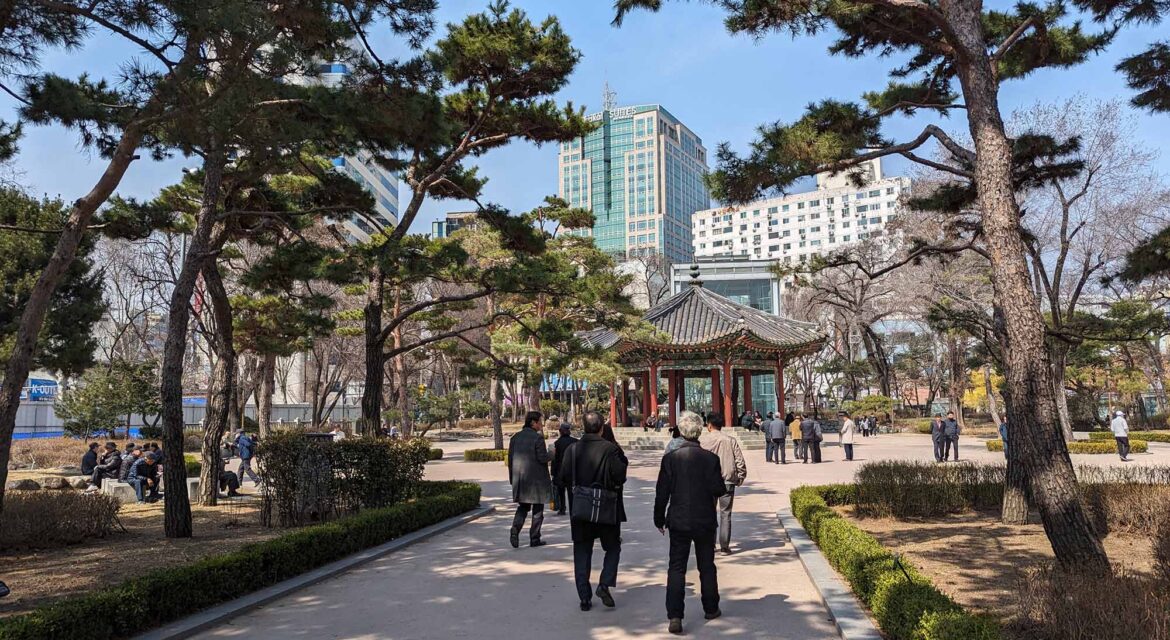 Featuring one of the most notable pieces of history in the entire nation, Tapgol Park allows audiences to experience the history and culture that defines the city of Seoul and all of South Korea. With a generous amount of space, Tapgol Park allows audiences to both relax and discover the unique blend of history and contemporary culture that defines the culture of the region. Both residents and visitors can engage with the various landmarks in the park on multiple levels, allowing them to embark on a journey of discovery that spans eras and audiences.
Featuring one of the most notable pieces of history in the entire nation, Tapgol Park allows audiences to experience the history and culture that defines the city of Seoul and all of South Korea. With a generous amount of space, Tapgol Park allows audiences to both relax and discover the unique blend of history and contemporary culture that defines the culture of the region. Both residents and visitors can engage with the various landmarks in the park on multiple levels, allowing them to embark on a journey of discovery that spans eras and audiences.

Named for the Wongaska Pagoda
 While Tapgol Park is the first modern park in Seoul, it has a history that stretches back far longer. The Wongaksa Pagoda was built in 1471 to record the founding of Wongaksa (temple) in 1465. The park gets its name from this icon, as the word “tap” means “pagoda.” The 10-storied Wangaksa Pagoda is National Treasure No.2 for the nation and is contained in a glass case at the rear of the park.
While Tapgol Park is the first modern park in Seoul, it has a history that stretches back far longer. The Wongaksa Pagoda was built in 1471 to record the founding of Wongaksa (temple) in 1465. The park gets its name from this icon, as the word “tap” means “pagoda.” The 10-storied Wangaksa Pagoda is National Treasure No.2 for the nation and is contained in a glass case at the rear of the park.
Nearby is the Monument of Wongaksa, which was built in 1471 to record the founding of Wongaksa. The turtle-shaped base is made of granite with a body tat has been cut from marble. It rises over 16 feet in the air. The entire site stands on the precincts of Wongak-sa, a Buddhist temple that was destroyed in 1504.
Opened as a park in 1897, the location quickly became associated with the fight for independence from Japanese colonization in the early 1900s. Bas-relief statues representing Korean national heroes celebrate and detail this history, with statues of Son Byeong-hee, and of Han Yong-un prominently on display. Various reliefs further showcase and document this history.
Containing numerous serene walking paths, audiences can interact with the over and unspoken history as easily as the natural settings that define the modern park, providing residents and visitors with a reason to stop by. This collection of experiences highlights what it can mean to actively embrace history while also cultivating connections with the present and future of a space and community.

Connections Across the Eras of Seoul
 A key feature of maps and guides to Seoul, Tapgol Park is recognized as a place where people come to meet up, go for walks, or just relax. Important to the legacy and history of the nation, Tapgol Park highlghts wat it can mean to enbale connections across eras.
A key feature of maps and guides to Seoul, Tapgol Park is recognized as a place where people come to meet up, go for walks, or just relax. Important to the legacy and history of the nation, Tapgol Park highlghts wat it can mean to enbale connections across eras.

